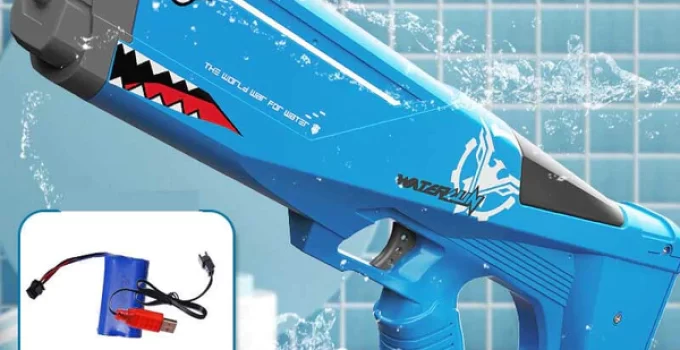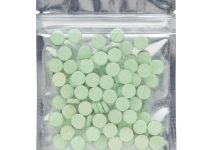Introduction to Water Blasters
Water blasters, also known as gel blasters or water guns, have been a staple of summer fun for generations. They provide endless hours of entertainment and excitement for both kids and adults alike. In this comprehensive guide, we will explore the different types of water blasters, how they work, tips for choosing the right one, and much more.
Types of Water Blasters
There are several types of water blasters available, each with its own unique features and capabilities. Some common types include:
- Pump-action water blasters: These require manual pumping to build up pressure and release water.
- Motorized water blasters: These use a battery-powered motor to propel water at high speeds.
- Continuous stream water blasters: These maintain a constant flow of water, eliminating the need to pump or press a trigger.
How Water Blasters Work
Water blasters come in two main mechanisms: pump action and motorized.
Pump Action
Pump-action water blasters work by using a piston mechanism to create pressure within the reservoir. When the trigger is pulled, water is forced out of the nozzle at high speed. The more pressure built up, the more powerful the blast.
Motorized
Motorized Water Blasters use battery-powered motors to propel water. These models typically have a trigger that activates the motor, which then forces water through the nozzle. Motorized water blasters often have a higher water capacity and range compared to pump-action models.
Choosing the Right Water Blaster
When selecting a water blaster, consider the following factors:
Range
The range of a water blaster is determined by the distance the water can travel before losing velocity. A longer range is beneficial for outdoor play, as it allows you to hit targets from a greater distance.
Capacity
Water capacity refers to the amount of water the blaster can hold at one time. A larger capacity means you can play for longer periods without needing to refill, but may also result in a heavier and bulkier blaster.
Size and Weight
Smaller, lighter water blasters are easier for children to handle, while larger, heavier models may be more suitable for older kids and adults. Consider the intended user’s age and strength when making your decision.
Top Water Blaster Brands
Several well-known brands manufacture high-quality water blasters, including Nerf, Super Soaker, and X-Shot. Each brand offers a variety of models with different features, so take the time to research and compare before making a decision.
Maintenance and Safety Tips
To ensure your water blaster stays in good working order and to prevent accidents, follow these tips:
- Empty and dry your water blaster after each use.
- Store in a cool, dry place away from direct sunlight.
- Never aim or shoot at someone’s face or eyes.
Water Blaster Games and Activities
Water blasters provide endless opportunities for fun games and activities, such as:
- Water blaster tag: Players try to “tag” each other by soaking opponents with their water blasters.
- Capture the flag: Teams compete to capture the opposing team’s flag while defending their own, using water blasters to slow down opponents.
- Water blaster obstacle course: Set up an obstacle course and have players navigate it while avoiding blasts from water blasters.
- Water balloon battle: Combine water blasters with water balloons for an epic water fight.
Customizing Your Water Blaster
Many enthusiasts enjoy customizing their water blasters to improve performance or add a personal touch. Some popular modifications include:
- Painting or adding decals to change the blaster’s appearance.
- Upgrading the water reservoir for increased capacity.
- Modifying the pump or motor for enhanced range and power.
Before customizing your water blaster, make sure you’re familiar with the manufacturer’s warranty and any applicable laws or regulations.
Environmental Considerations
While water blasters are a fun way to stay cool and enjoy the outdoors, it’s essential to be mindful of water usage and environmental impact. Consider using biodegradable water balloons or opting for water blasters with a lower water capacity to help conserve water.
Conclusion
Water blasters are a timeless source of outdoor fun for people of all ages. With a variety of types, features, and brands to choose from, there’s a water blaster to suit every preference. By considering factors like range, capacity, and size, as well as following proper maintenance and safety practices, you can ensure endless hours of enjoyment for you and your friends.
Frequently Asked Questions
- What is the best water blaster for young children? Choose a lightweight, easy-to-use model with a lower water capacity for younger children. This will make it easier for them to carry and operate the blaster without assistance.
- Can I use a water blaster indoors? While it’s possible to use a water blaster indoors, it’s generally not recommended due to the potential for water damage and slip hazards. Stick to outdoor play areas for water blaster activities.
- How can I increase the range of my water blaster? Modifying the pump or motor can help increase the range of your water blaster. However, be cautious when making modifications, as they may void the manufacturer’s warranty or create safety risks.
- Are water blasters safe for pets? While most pets enjoy playing in water, it’s essential to use caution when using a water blaster around animals. Avoid aiming directly at your pet’s face, and monitor them closely for signs of distress or discomfort.
- How do I clean and maintain my water blaster? Empty and dry the water blaster after each use, and store it in a cool, dry place away from direct sunlight. Check for any signs of damage or wear before each use, and follow the manufacturer’s guidelines for care and maintenance.



